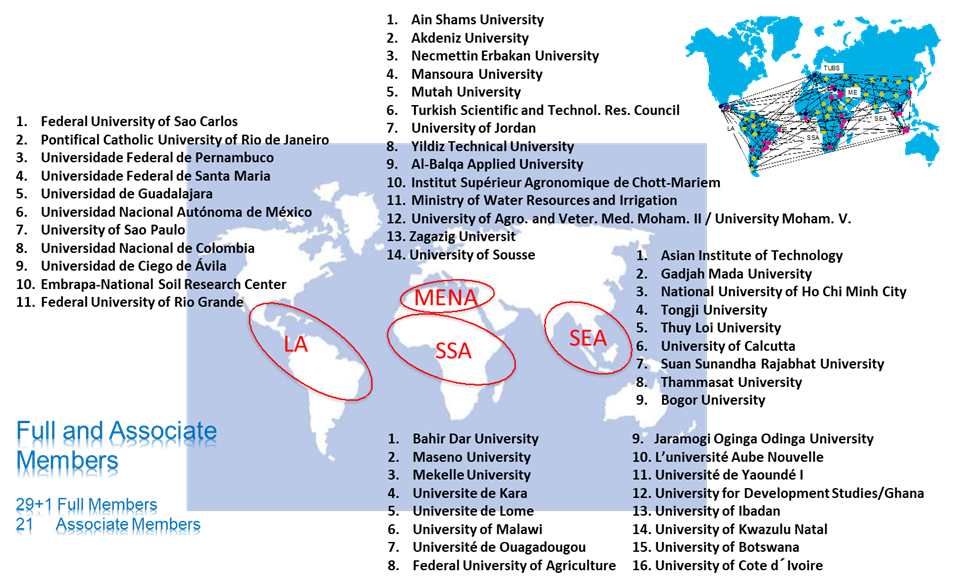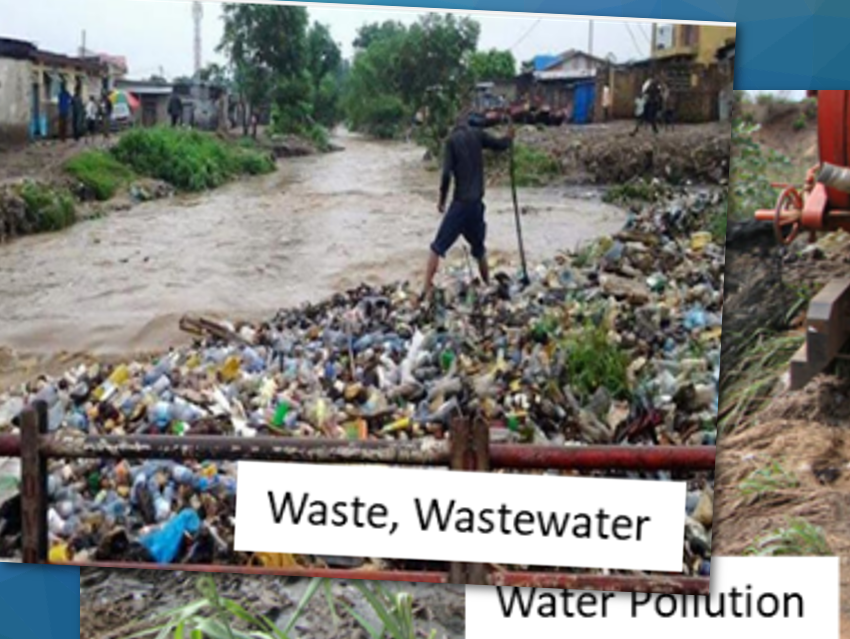The Background
70 % of the earth’s surface is covered by water. 97.5 % of this is seawater, which is unfit for human consumption. The global population is increasing and temperatures are rising. This means that the little freshwater as well as freshwater reserves are becoming increasingly scarce and will be under massive exploitation pressure in the future. The global freshwater reserves actually account for 2.6 % (0.36 billion km3) of earth’s water. 2 % (0.28 billion km3) of these are stored in the form of polar, marine, and glacial ice. Thus, they are unavailable for economic and, above all, ecological reasons. This leaves 0.6 % (0.08 billion km3) in the form of groundwater, surface water, and soil and atmospheric moisture for use.
According to UNICEF estimates (UNICEF, Weltwassertag 2021), 2.2 billion people worldwide do not have regular access to clean water. Almost 748 million people still lack access to an improved drinking water source. Further, one-third of mankind does not have any sanitary facilities or wastewater disposal systems. Nevertheless, due to the growing world population, accompanied by increasing urbanization and industrialization, the use of freshwater is steadily rising. As a result, the amount of wastewater is also growing. In large parts of emerging and developing countries wastewater is mostly discharged untreated into the environment. This in, turn, endangers surface and groundwater reservoirs. The vicious circle is closing.
Water is undeniably at the heart of the UN’s 2030 Agenda for Sustainable Development. This makes the sustainable use of water one of the most important issues for development cooperation. It is actually a matter of common sense for a household to consistently deal with a commodity that is only available in small natural quantities in a sustainable and environmentally sound manner. This has nothing to do with eco-romanticism or “greenism”. The technical and economic possibilities and tools are at hand and can actually be used in the sense of a sustainability concept.
The Exceed-Swindon Project
The Competence Center for Sustainable Water Management in Developing Countries at the Technical University of Braunschweig, Germany, first began its work in 2009. Following an interim evaluation, it will be funded by the German Federal Ministry for Economic Cooperation and Development (BMZ) and the German Academic Exchange Service (DAAD) until the end of 2022.
Over time, an extensive network consisting of 51 university partners from 16 countries on four continents has been established (see Fig. 1). This international partnership project is called Exceed-Swindon project and aims to build a network between the universities, stakeholders, and policymakers and promote exchange and knowledge transfer.

Figure 1. Worldwide Exceed-Swindon project network of university partners.
Together with the scientific colleagues, overarching topics were defined within the framework of the project title “Sustainable Water Management in Developing Countries” and the project network and expert groups were formed based on these. The topics include urban water management, hydrology, water quality, waste and wastewater management as well as water (water governance) under political and socio-economic aspects. The expert groups consult with each other and identify overlaps in expertise and congruent problem areas. This makes it easier to create links between them. In joint research projects, targeted, practice-relevant solution concepts are developed.
Why Sustainable Water Management?
In the coming decades, sustainable water management will become as important as sustainable energy management is today.
The demands on sustainable water management in developing and emerging countries are immense. They are intensifying due to the accumulation of climatic extremes that occur at shorter intervals as well as due to unstable political and socio-economic conditions. With regard to the industrialized countries, the aggravation of the water problem is equally due to the shortened periodicity of extreme events as a result of climate change and the increasing exploitation and pollution of freshwater resources.
Figure 2. Water pollution and water crisis.
Water use means water pollution (see Fig. 2). Even today, the majority of mega-cities—here especially in developing countries—are overburdened in water management. In many cases, wastewater treatment is still based on an end-of-pipe solution. In the agricultural sector, it is still a long way to go before wastewater can be treated in a controlled and efficient manner or recycled into depleted reservoirs. Particularly in the agricultural sector, there is an urgent need for action in wastewater reuse, as up to 70 % of freshwater resources worldwide are currently used for irrigating fields. If this situation does not change in the coming years, droughts and famines will become even more frequent.
Of course, this means that some changes or extensions have to be made in the field of conventional wastewater treatment technology. This is especially true in the field of post-treatment, for example, through the use of advanced oxidation processes (AOPs) and activated carbon filter technologies. The cost issue regarding the investment is certainly not problematic, as this could increase the total available water resources. However, fixed and maintenance costs should be manageable if regenerative energy concepts are increasingly used as a basis. Problems in the area of micropollutants or microplastics could be solved.
Overall, the extent of the challenge in the transregional and international sphere is measured in terms of different social, political, ecological, and economic dimensions. However, the greatest possible compatibility must be achieved at the national and, above all, international level. Further hesitation or inaction will ultimately weaken the resilience of the systems. As a result, natural disasters intensify and, due to their shortened time sequence, release dynamics that can no longer be managed in a controlled manner. By the time countermeasures take effect, problems will have multiplied in the course of this dynamic, so that solutions to problems will only take effect with a time lag, and thus, only have a repairing rather than a preventive character.
What Is to Be Done?
If one looks at the statements made so far, a working tableau (see Tab. 1) can be filtered out for further action in terms of preventive and sustainably effective solutions.
Table 1. Working tableau of the Exceed-Swindon project – structured approach.
.jpg)
The efficient and sustainable use of water resources is non-negotiable in the course of the increasing water and resource scarcity worldwide. In this context, security in the supply of water and the disposal of wastewater must be given high priority, which can also ensure a sustainable water cycle. This presupposes that a balance is struck between different usage claims, taking into account the principle of sustainability. Last but not least, this requires an efficient water infrastructure that is also flexible enough to be adapted promptly to demographic change and the process of urbanization.
In view of the ecological challenges—such as the maintenance of ecosystem services—and the biodiversity essential for biotic communities, sustainable land use management must also be linked to water management. Here, global solutions are not always advisable, as local diversity requires an adapted strategy and structural change, so that solutions at the local level are often the better ones. This is very often evident in extreme events that affect different natural and settlement areas.
Without question, a forward-looking and adapted development as well as the consistent implementation of sustainable water management is desirable and always better than an ultimately disaster-driven reaction to counter the three basic evils of “too much, too little, and too dirty” in the water problem.
References
- Tim Rohde, Weltwassertag 2021: 10 Fakten über Wasser, UNICEF March 19, 2021.
- Progress on household drinking water, sanitation and hygiene 2000-2017, United Nations Children’s Fund (UNICEF) and World Health Organization, 2019.
- UN World Water Development Report 2020: Water and Climate Change, UNESCO 2020. ISBN: 978-92-3-100371-4
- Website of the Exceed-Swindon Project
Author
Professor Andreas Haarstrick, TU Braunschweig, Germany





